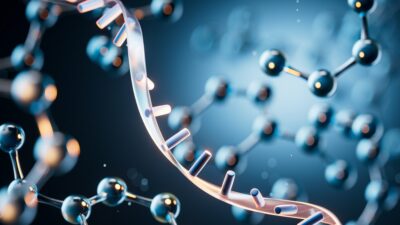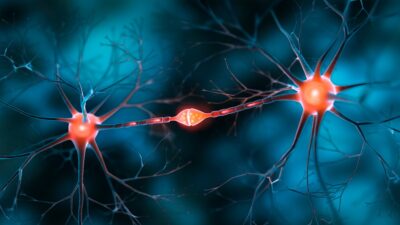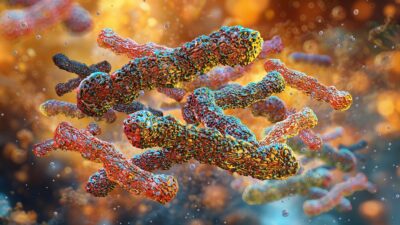Dr. Pankaj Kapahi: “AGEs are a Trillion-Dollar Industry”
- Glycation was a powerful force in the evolution of human food desires.

Dr. Pankaj Kapahi is a veteran geroscientist. His laboratory at the famous Buck Institute for Research on Aging is among the few that study advanced glycation end products (AGEs) and the many ways in which they affect aging. Dr. Kapahi’s company, Juvify, produces GLYLO, a supplement for detoxifying AGEs that also reduces food cravings. In this conversation, we discuss how it works, how sound the science behind it is, and whether supplements are inferior to drugs.
Could you give us a quick overview of AGEs and of their role in aging?
The history of advanced glycation end products starts with the discovery of the Maillard reaction in 1912. The gist of it is that when sugars and amino acids come together at high heat, they react to form irreversible products, which are called advanced glycation end products, or AGEs.
That is what drives the flavor upon cooking food. As an example, when you put toast in the toaster, because of the sugars and amino acids in the bread, you form more than 50 new flavors.
Funny enough, I just did this half an hour ago, and it made me think of AGEs.
It’s ubiquitous. It’s the chemical reaction most commonly conducted chemical reaction, and yet, if you ask someone, they probably won’t have heard of it.
Just the act of cooking and frying creates thousands of chemicals. Later it was realized that advanced glycation end products also build up in your body, and we know this is important because several enzymes are in place to deal with this. One of the things I find fascinating is that every cell that uses glucose can’t avoid those byproducts of metabolism, which are reactive, like the one called methylglyoxal. I’ll stick to that one today because there are many sources of AGEs and precursors, but this is the one we have been most fascinated with because it comes from glycolysis and is a ubiquitous reaction that is conserved from bacteria to us.
Every time a cell breaks down glucose into two, three carbon atoms, you make methylglyoxal non-enzymatically. There are many interesting questions to ask, like “at what rate does this methylglyoxal form, what can regulate that?” We liken it to a leaky tap, whereby during glycolysis, you leak some methylglyoxal, but these things are not well understood, though some of those steps have been identified.
What is important to remember is that these are non-enzymatic reactions, so they have been ignored by biochemists. Biochemists mostly studied metabolic pathways in the past, as this was thought to be the important stuff. Stuff that is happening at low rates, non-spontaneously, was not of interest, but it becomes of great interest when you are talking about aging, because we are now studying not how the system functions but rather how it falls apart.
We view AGEs are one of the drivers of it. Research into AGEs was popular a while back but unfortunately, I would say, fell out of favor, I think because there weren’t any drugs to target them. Some, like aminoguanidine, were successful in animals, but they didn’t make it through clinical trials. Let me give you the background. They used what are called AGE blockers to prevent the formation of AGEs by trapping the precursors. This was done more with rational design, by chemists, who were asking the question, how do you block this reaction? Turned out that had some side effects, and that’s why the clinical trials didn’t go forward.
Our approach has been different: we screen for compounds that enhance endogenous defenses, for example, by activating the TRPA1 channel. It’s a very interesting drug target but not really tackled yet. We published some work, and we have shown that a commonly used supplement, lipoic acid, activates TRPA1 to lower methylglyoxal, a major precursor of AGEs, by activating Nrf2.
Several AGEs have been discovered, the list keeps growing, and we still don’t understand the chemistry around them, because like I said, they’re going to be present at small levels, being non-enzymatic, and each one is going to react with a variety of different amino acids, proteins and lipids.
Methylglyoxal has been shown to induce DNA damage and mutations, and it also reacts with lipids and amino acids, especially arginine and lysine, but also cysteine to some degree.
The use of AGEs is also a trillion-dollar industry. For example, cooking one of those fake meat burgers is a very interesting experience. When you cook vegetables at home, it takes a while to do this, but you put one of those burgers on the skillet, and it goes brown in no time. I think they have added things, played with glycation chemistry to make that patty resemble meat, to create the familiar flavor.
Hundreds of millions of dollars are spent to give our cornflake just the right taste with the right roasting. There are myriads of possible combinations, and that’s why it’s a huge thing to get it right.
What is less talked about is that we consume AGEs from outside as well. There are studies showing that you increase the risk of diabetes by consuming AGEs from outside. This is what our lab is studying as well, the intake of AGEs from outside, but more importantly, what are the endogenous defenses?
In a few words, how do AGEs do this damage to our body?
Think of a piece of bread. Once it’s become brown, you can’t get it back into its original form, and that’s what’s happening in the body. When amino acids react with methylglyoxal or other precursors, they form advanced glycation end products, where the word “advanced” means that the product does not get reversed anymore, theoretically. As more of these are created, you will end up with more inert stuff in the cell, making it less viable.
The kidneys are what normally clear a lot of these AGEs. AGEs are present in our cells and in biofluids, and they are constantly being removed, and it’s one of the problems. AGEs have been linked to chronic kidney disease because they cause inflammation, and if the kidney is not doing its job getting rid of them; this creates a positive feedback loop, leading to more inflammation.
Do our endogenous defenses fail with age, is that what’s happening?
First, those defenses do decline with age. Second, they vary between us depending on our genetics and diets. There are people who have diabetes for 50 years but don’t show any pathology. How do they avoid that? In fact, many animals do too. Diabetic animals can be long-lived. We work on flies that have high glucose, but they somehow manage to avoid this damage.
The other very interesting point is that there’s a battery of enzymes in place to deal with AGEs, and we know that if you knock one out, it’s not that you just die. Animals can survive without one or two of these enzymes, because there is a redundancy built in, but as you knock more of them, that’s when you start seeing the collapse. You’ve got changes with age, diet, genetic variance, insults, et cetera, and the whole system is imperfect and tuned differently in different organisms.
If I understand correctly, formation of AGEs is inherent to our metabolism, so we will probably have to do mitigation. What would the possible strategies be?
We have multiple thoughts on strategies. First, let’s think about where these are coming from. Like I said, we focus more on methylglyoxal, so that’s already keeping us busy. This major AGE comes from glycolysis, so every time you reduce glycolysis, you will reduce methylglyoxal production. Now, you can see how fasting makes sense. Under fasting, you would make much less of it. If it’s coming from glucose, whenever you shift utilization of fat, which is what you do by fasting, you would reduce the methylglyoxal load.
In general, many of these AGEs are derived from metabolism, so that would be one way to tackle this. Then there is detoxification. We are conducting screens to identify compounds and understand the endogenous enzymes that are involved. A number of those have been identified, and polymorphisms in those have been shown to be linked to diseases. Looking for pharmacological strategies to activate them would be a second avenue. Following the research we have done recently, we came up with a cocktail of compounds that we call glycation lowering compounds under the name GLYLO. That’s another one of our strategies.
There is also a third one. As you can imagine, once an AGE is formed, it goes and binds many things. For example, the most studied one is the RAGE, receptor for advanced glycation end-products, but it’s not the only one. One thing people have been trying to do is to produce antibodies that prevent binding. By the way, in my view, the field has been over-focused on RAGE. We think there are multiple receptors for AGEs, and we have identified a number of them using mass spectrometry.
What would the dietary recommendations for mitigating damage from AGEs be?
I have to say that as a result of this research, I began paying much more attention to my glucose and sugar intake. I do intermittent fasting. The reason is, if you just look at your glucose level after each meal, it’s going to take a couple of hours to come down.
If you have only two meals a day, you’re giving the body more of a chance to go into using fat at the expense of glycolysis, so when and what you eat makes a difference. You can go towards low-glycemic diets, more whole food-based, cutting down your free sugars. Those are very simple things anyone can do to decrease AGE burden.
Especially in plant-based diets, it could be hard to drastically cut on carbs.
You can eat whole grains since they do not increase the glycemic load as much. Fiber plus carbs always helps in maintaining glucose levels. Having a high-fiber diet is the way to go.
What about the AGEs that are created by cooking?
Studies indeed show that diabetics on a raw food diet do a lot better, maybe for several reasons. You just feel better on a raw diet. We try to choose our food very carefully, but nobody ever asks what happens when you cook those products. Some types of cooking should be considered quite dangerous. If you look at the metabolomic analysis, when you fry something, you are making more than 5,000 chemicals. We have no idea what they do.
To lower AGEs, one advice is to cut on dry cooking. You should try to do more steam cooking, that’s good. Adding more acid also reduces the production of AGEs.
Let us talk about your supplement, GLYLO. How does it work? Specifically, at which stage does it intervene with AGEs?
It started with us publishing a study in C. elegans where we had a mutant that created a lot of AGEs, and it was short-lived and developed neuropathy. We then screened for chemicals that would reduce the AGEs there. We were agnostic about where it would lower AGEs. It could be doing it by multiple paths, but we know at least one of the pathways is detoxification of AGEs, so upregulation of NRF2, the pathway that activates GLO1 and detoxifies methylglyoxal. We were very pleasantly surprised to see that alpha-lipoic acid, which we found as a hit in worms, is actually given for diabetic complications, even in humans.
Alpha-lipoic acid is clinically prescribed in many countries and has been shown to mitigate diabetic neuropathy and other diabetic symptoms and lower blood sugar. In terms of the mechanism, we think that it also shifts the animal towards fat utilization and reduced sugar intake, which is very interesting, because when we give the animals this combination, they eat less when they’re on a high-sugar diet. There is also the increase in detoxification, and maybe there’s some effect on how AGEs bind certain targets as well. We think there are multiple mechanisms at play, and that’s what we are trying to decipher now in the lab.
There are other ingredients as well, and you say that they work synergistically. Could you explain how this happens?
What we found was that when we combine these compounds, there is synergy between them and the effects are not one plus one. We did an unbiased screen, and we tried combining all the products that came up in all possible combinations. Adding a fifth of each of the components was much better than using any of the single compounds alone.
We reduced it to these five ingredients, and when we added them together, the effect became multi-fold rather than additive. For example, our data suggests that it is way better to take this combination than nicotinamide alone or alpha-lipoic acid alone. Maybe, when we add them together, they’re targeting multiple pathways including methylglyoxal in different ways.
The effect of reduced cravings – was there something you anticipated, or was it discovered serendipitously?
It was indeed serendipitous, but it kind of makes sense in hindsight that the animals that make more AGEs eat more. The way I like to think of it is that sugar addiction had a protective role in the evolutionary sense for human beings and that we wouldn’t have made it this far without it.
In the past, when resources were limited, one can imagine what would have happened. When we encountered a food source, a sugar source, there would be a mechanism in place to tell you, “Eat more of this because you don’t know when you’re going to get the next meal.” Everyone has this mechanism built in because it ensures survival. Perhaps that’s why we love to cook our food – in part, because cooking makes it a lot easier to take in more calories. In hindsight, it makes sense that AGEs mediate food addiction.
The supplement route that you took has both advantages and problems. Why did you choose it?
First of all, as I said, we screened a lot of compounds, and we found multiple hits, including among some supplement-grade compounds in that library that had demonstrated very strong effects.
Second, we obviously wanted an easier path to the clinic; we wanted to test if this would work in humans. At the end of the day, you want to help people, and it’s just faster. If it’s a drug, the path is much longer, and you need much more money.
I would say, I see two kinds of people. If you talk to clinicians and patients, they would love something like this, but if you talk to the pharma, to the people on the business side of it, they will tell you that it’s not the right way to go.
Also, what is a prescribed drug or a supplement is somewhat arbitrary, and it varies across countries. In some countries, lipoic acid is a clinically prescribed drug, and in others, it’s considered a supplement. The lines between these two classes of chemicals are very fine. I feel comfortable with it being a supplement, as there is good clinical safety there, and that is accessible to everyone.
Take rapamycin, for example. It has been proven in multiple model systems, but I can’t go and take rapamycin. Despite its potential benefits, it’s not easily available to people.
Do you think that supplements requiring less rigorous research might hurt the longevity field’s reputation?
First, AGEs are not just about aging. They are very relevant for diabetes, for insulin sensitivity. Second, I would argue that if you want something for aging and diabetes, with a majority of the people affected, it should be very safe, which is why a supplement where all the ingredients have already been proven safe and its easily accessible is more appealing to me.
After all, both a drug and a supplement are chemical entities, right? It’s about the work you do on them, the amount of work that the scientists will put into it. This is what makes it more or less rigorous, and this is what we should be talking about. If you look at the aging field, some of the best chemicals that have come up are supplements, such as nicotinamide.
As I said, I see it more as a divide between what the pharma wants and what the patients and the doctors want. These are the market forces we have created. You can’t make a billion dollars off a supplement, so there is less interet. You can make a billion-dollar drug, but that doesn’t guarantee that it will be more effective than some supplements. For instance, omega-3 fatty acids and vitamin D are just as powerful as many things out there.
What are your plans for clinical trials?
We are working hard to publish our paper and seek funding for the clinical trial. We have a number of physicians interested. The first clinical trial we are planning to do would be a three- to six-month trial to see if that would influence insulin sensitivity and weight gain. We’re starting there to follow up on what we’re seeing in the preclinical studies.
As a geroscientist, how do you see the field today? Which directions are most promising, most exciting? What are we doing wrong?
I think the aging field is definitely at its most exciting time. Exciting discoveries are being made in multiple areas in the fields of metabolism, senescence, epigenetics, and stem cells. This suggests that there’s a lot of hope for the future.
Scientifically, I think there’s a lot of things coming together, but much more needs to be understood. I highly value the importance of basic science, and we ourselves are trying to understand the genetics of advanced glycation end-products, which is a neglected area. I think the next step is the translation of all this.
What are we doing wrong?
I would say the problem is with the market forces. The way the FDA works, the way the insurance works, they are not quite ready to embrace performance-improving, health-improving technologies. Like many people have said, what we have is a sickcare system. It only rewards treating the sick. We need incentives for keeping the average person healthy.
For instance, just imaging the benefits of simply asking people to move more. An attempt was made to do this during the Obama administration, but a lot more needs to be done. The impact would be enormous. Those things have to become the culture.
We were able to give up smoking. I always use this as an example. As a country, the US did very well in curtailing smoking. This can be extended to other healthy behaviors. We just have to create the right culture and the incentives.








